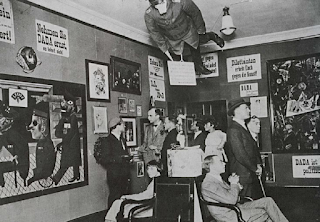ART AND ANARCHISM 3.0 : Neo-Impressionism
With the fall of the Paris Commune and the rise of industrial capitalism, old modes and relationships of production started to vanish in France. Local produces were quickly traded for the mass produced, imported goods. Peasants were dragged into debt, so they migrated to the big cities as unskilled laborers. They were faced with the capitalist culture, alienation, marginalization and dispossession.
Neo-impressionists made very important commentaries on this period. Among them were Signac, Pissarro, Seurat, Bloch and many others who were leading a stylistic change. They were all anarchists who contributed to anarchist journals with their paintings and graphics.
Below, in Henri Lebasque’s lithograph for Les Temps Nouveaux, we see the starvation of a child in contrast to the plentifulness of the capitalism and the commodification of one of the simplest basic needs: bread.
While some artist dealt with this notion of dispossession, others focused on the oppression of the workers under capitalism. Camille Pissarro‘s booklet called “Social Turpitudes” is a great example to that.
They have also depicted the alternative ways of living in the pre-capitalist world. They were aware of the ways in which capitalism exploited and destroyed nature. They believed that “small and intelligent” societies were the basis of anarchism. In "Apple Picking" from Camille Pissarro, we witness a pre-capitalist mode of harvesting, harmony among people and the flow of life in nature. They take their time, talk to each other, are voluntarily there and enjoy their time. Paintings as such, depicted a utopian dream.
Their technique was intertwined with anarchist politics as well.
“… individual spots of paint akin to the human individuals in anarcho-communist social theory, are amassed to form unified, harmonious, synthetic compositions …. in which the discrete colors are scientifically applied to complement one another while preserving their own unique character”
Next week I'll be talking about Dada's relationship with anarchism and anarchist aesthetics.





Comments
Post a Comment